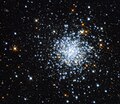Fitxategi:NGC2164 - HST - Potw2134a.jpg

Aurreikuspen honen neurria: 689 × 600 pixel. Bestelako bereizmenak: 276 × 240 pixel | 552 × 480 pixel | 883 × 768 pixel | 1.177 × 1.024 pixel | 2.354 × 2.048 pixel | 3.759 × 3.271 pixel.
Bereizmen handikoa ((3.759 × 3.271 pixel, fitxategiaren tamaina: 4,58 MB, MIME mota: image/jpeg))
Fitxategiaren historia
Data/orduan klik egin fitxategiak orduan zuen itxura ikusteko.
| Data/Ordua | Iruditxoa | Neurriak | Erabiltzailea | Iruzkina | |
|---|---|---|---|---|---|
| oraingoa | 08:32, 23 abuztua 2021 |  | 3.759 × 3.271 (4,58 MB) | Fabian RRRR | == {{int:filedesc}} == {{Information |description={{en|1='''Cluster in the Cloud This Picture of the Week shows an open cluster known as NGC 2164, which was first discovered in 1826 by a Scottish astronomer named James Dunlop. NGC 2164 is located within one of the Milky Way galaxy's closest neighbours — the satellite galaxy known as the Large Magellanic Cloud. The Large Magellanic cloud is a relatively small galaxy that lies about 160 000 light-years from Earth. It is considered a satellite... |
Irudira dakarten loturak
Hurrengo orrialdeek dute fitxategi honetarako lotura:
Fitxategiaren erabilera orokorra
Hurrengo beste wikiek fitxategi hau darabilte:
- ar.wikipedia.org proiektuan duen erabilera
- az.wikipedia.org proiektuan duen erabilera
- be.wikipedia.org proiektuan duen erabilera
- bs.wikipedia.org proiektuan duen erabilera
- ce.wikipedia.org proiektuan duen erabilera
- de.wikipedia.org proiektuan duen erabilera
- diq.wikipedia.org proiektuan duen erabilera
- el.wikipedia.org proiektuan duen erabilera
- en.wikipedia.org proiektuan duen erabilera
- eo.wikipedia.org proiektuan duen erabilera
- fr.wikipedia.org proiektuan duen erabilera
- hr.wikipedia.org proiektuan duen erabilera
- kk.wikipedia.org proiektuan duen erabilera
- mk.wikipedia.org proiektuan duen erabilera
- nl.wikipedia.org proiektuan duen erabilera
- pl.wikipedia.org proiektuan duen erabilera
- pt.wikipedia.org proiektuan duen erabilera
- ru.wikipedia.org proiektuan duen erabilera
- sh.wikipedia.org proiektuan duen erabilera
- sk.wikipedia.org proiektuan duen erabilera
- sr.wikipedia.org proiektuan duen erabilera
- tl.wikipedia.org proiektuan duen erabilera
- tr.wikipedia.org proiektuan duen erabilera
- tt.wikipedia.org proiektuan duen erabilera
- uk.wikipedia.org proiektuan duen erabilera
- uz.wikipedia.org proiektuan duen erabilera
- vi.wikipedia.org proiektuan duen erabilera
- www.wikidata.org proiektuan duen erabilera
- zh.wikipedia.org proiektuan duen erabilera

